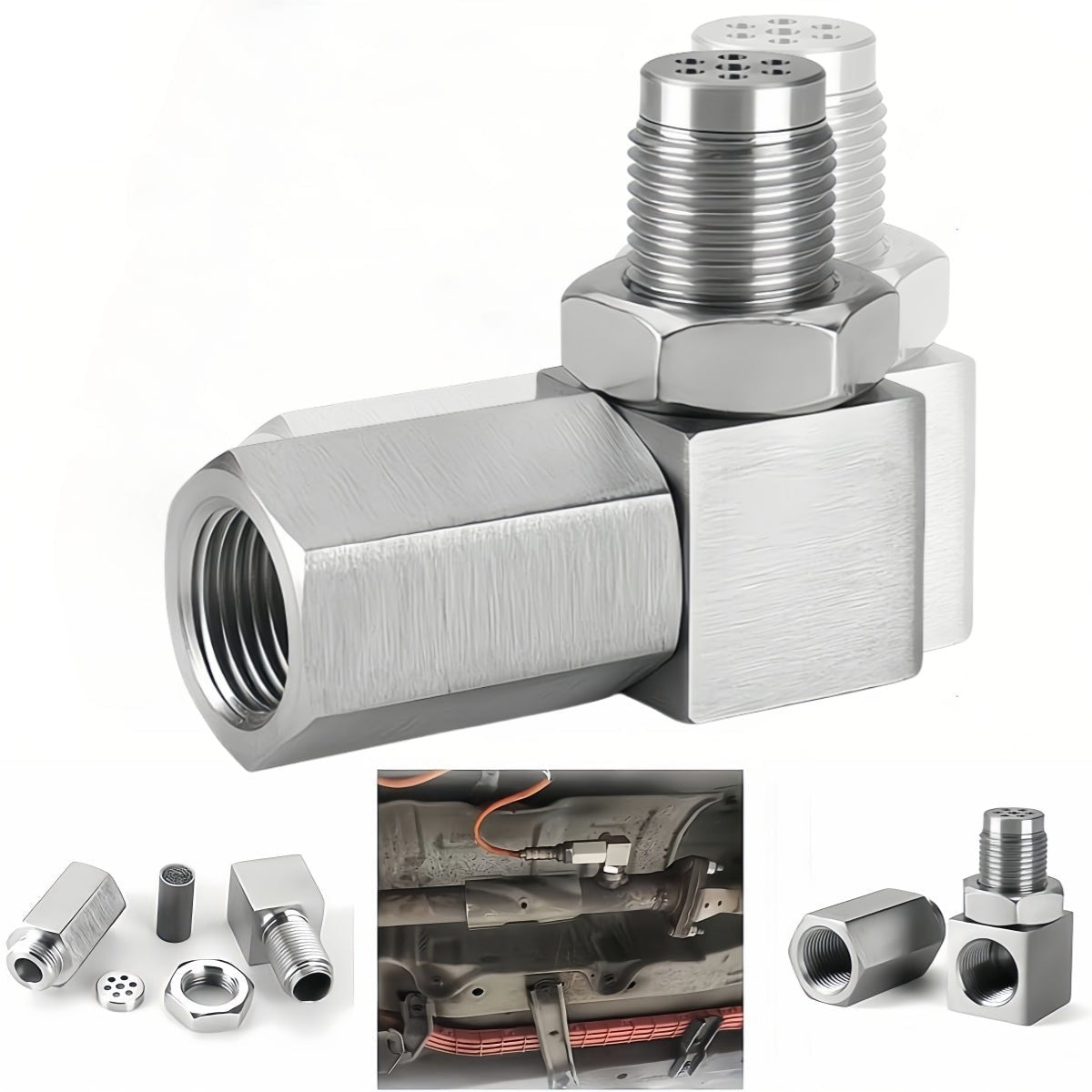A Small Component with a Big Impact
In the intricate world of automotive performance, even the smallest components can make a significant difference. One such component is the 90° O2 sensor spacer. Designed to optimize the placement of oxygen sensors, this spacer plays a crucial role in enhancing engine efficiency and resolving common issues like the Check Engine Light (CEL) triggered by codes P0420 and P0430.
Understanding the 90° O2 Sensor Spacer
A 90° O2 sensor spacer is an angled adapter that repositions the oxygen sensor away from direct exhaust flow. This adjustment can help in:
- Reducing False CEL Triggers: By altering the sensor’s position, it can prevent false readings that often lead to CEL codes P0420 and P0430.
- Enhancing Sensor Longevity: The spacer shields the sensor from extreme temperatures and contaminants, potentially extending its lifespan. Catalytic Converter Solutions
- Facilitating Aftermarket Modifications: For vehicles with aftermarket exhaust systems or high-flow catalytic converters, the spacer ensures compatibility and optimal sensor function.Catalytic Converter Solutions+2Tec Space+2Mini Catalizador®+2
Benefits of Using a 90° O2 Sensor Spacer
1. Improved Engine Performance
By ensuring accurate oxygen readings, the spacer aids in maintaining the optimal air-fuel ratio, leading to smoother engine operation and better fuel efficiency.
2. Cost-Effective Solution
Instead of replacing expensive catalytic converters, installing a 90° O2 sensor spacer can be a more economical approach to resolving emission-related issues.Catalytic Converter Solutions+1Honda The Other Side+1
3. Easy Installation
Most spacers are designed for straightforward installation, requiring minimal tools and time, making them accessible even for DIY enthusiasts.
Installation Guide: Step-by-Step
- Safety First: Ensure the vehicle is turned off and the exhaust system is cool.
- Locate the Oxygen Sensor: Identify the sensor that needs adjustment, typically found on the exhaust manifold or downstream of the catalytic converter.
- Remove the Sensor: Using an appropriate socket, carefully remove the oxygen sensor.
- Install the Spacer: Thread the 90° spacer into the sensor’s original position.
- Reattach the Sensor: Screw the oxygen sensor into the open end of the spacer.Bama Delta Gamma+7Catalytic Converter Solutions+7Honda The Other Side+7
- Reconnect Electrical Connections: Ensure all sensor wiring is properly reconnected.
- Test the Vehicle: Start the engine and check for any warning lights or irregularities. Honda: The Other Side
FAQs
Q: Will a 90° O2 sensor spacer fix all CEL codes?
A: No, it primarily addresses codes related to catalytic converter efficiency, such as P0420 and P0430.
Q: Is the spacer legal for street use?
A: Legality varies by region. It’s essential to check local emissions regulations before installation. Catalytic Converter Solutions
Q: Can I install the spacer myself?
A: Yes, with basic tools and mechanical knowledge, it’s a manageable DIY task.
Conclusion: Enhancing Performance with Precision
The 90° O2 sensor spacer is a testament to how minor adjustments can lead to significant improvements in vehicle performance and efficiency. By addressing specific emission-related issues and facilitating better sensor readings, it serves as a valuable tool for both professional mechanics and car enthusiasts.

